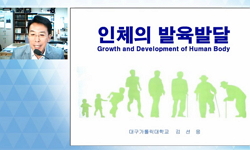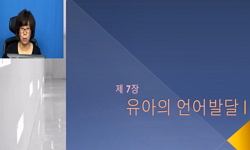The present study investigated the characteristics of informants that affect Korean children’s selection of a more reliable source of information with regard to age, gender, and status. Four and five-year-old children were presented with the picture...
http://chineseinput.net/에서 pinyin(병음)방식으로 중국어를 변환할 수 있습니다.
변환된 중국어를 복사하여 사용하시면 됩니다.
- 中文 을 입력하시려면 zhongwen을 입력하시고 space를누르시면됩니다.
- 北京 을 입력하시려면 beijing을 입력하시고 space를 누르시면 됩니다.

한국 아동의 신뢰성 판단에 영향을 미치는 정보제공자의 특성 = Informants' characteristics that affect the selective trust of Korean children
한글로보기https://www.riss.kr/link?id=A105428347
- 저자
- 발행기관
- 학술지명
- 권호사항
-
발행연도
2018
-
작성언어
Korean
-
주제어
선택적 신뢰 ; 연령 ; 지위 ; 발달 ; 문화적 요인 ; 성별 차이 ; selective trust ; age ; status ; development ; cultural factor ; gender difference
-
등재정보
KCI등재
-
자료형태
학술저널
- 발행기관 URL
-
수록면
1-19(19쪽)
-
KCI 피인용횟수
2
- DOI식별코드
- 제공처
- 소장기관
-
0
상세조회 -
0
다운로드
부가정보
다국어 초록 (Multilingual Abstract)
The present study investigated the characteristics of informants that affect Korean children’s selection of a more reliable source of information with regard to age, gender, and status. Four and five-year-old children were presented with the pictures of two people contrasted in terms of their age, gender, or status. they were then asked who they expected to have more knowledge and which informant they would prefer to ask the name of a novel object. Overall, 5-year-olds selected adults over children, teachers over parents, showing that they consider age and status in their selective trust. By comparison, 4-year-olds were not affected by these characteristics in choosing a knowledgeable informant. Interestingly, while boys selected teachers as a reliable source over parents, girls’s selective trust was not affected by the status of the informant, suggesting that status is a characteristic that boys tend to consider at an earlier age. These results suggest that the informant’s characteristics may affect the development of selective trust differently according to the child’s age and gender, and that Korean children’s development of selective trust may not follow the same developmental pattern as children studied in the US or Europe.
국문 초록 (Abstract)
타인에게 정보를 습득하고 세상에 대해 배워가는 아동에게 있어서 어떤 정보제공자를 더 신뢰할 수 있는지를 판단하는 선택적 신뢰의 능력은 매우 중요한 요소로 최근 2-30년간 많은 연구가 ...
타인에게 정보를 습득하고 세상에 대해 배워가는 아동에게 있어서 어떤 정보제공자를 더 신뢰할 수 있는지를 판단하는 선택적 신뢰의 능력은 매우 중요한 요소로 최근 2-30년간 많은 연구가 서구에서 수행되어 왔다. 그러나 상대적으로 문화 및 사회적 환경이 다른 한국에서 선택적 신뢰에 영향을 미치는 정보제공자의 특성을 별도로 규명한 연구는 거의 없었다. 본 연구에서는 한국 아동의 선택적 신뢰에서 중요하게 고려되는 정보제공자의 특성을 성별, 연령, 지위를 포함하여 포괄적이면서도 탐색적으로 살펴보고 기존의 서구 연구의 결과와 비교하여 검토해보고자 하였다. 이를 위해 만 4-5세의 한국 아동들에게 정보제공자의 연령, 성별, 지위를 비교하는 사진을 제시하고 지식을 더 많이 보유했을 것으로 기대되는 사람과 실제로 새로운 물건의 이름에 대해 물어보고 싶은 사람을 선택하도록 하였다. 그 결과, 아동의 연령과 성별에 따라 선택 반응이 상이하게 나타났다. 4세는 지식 보유의 대상으로서 특정한 사람에 대한 유의한 선호를 보이지 않았으나 5세 아동은 아동보다는 성인을, 평범한 성인보다는 선생님의 지위를 가진 성인을 더 많이 선택하였다. 흥미롭게도 남아의 경우에는 연령과 무관하게 지위에 대한 선택적 신뢰를 보인 반면에 여아는 지위에 대한 영향을 받지 않는 것으로 나타났다. 이러한 결과는 한국의 사회문화적 상황에서 성장하는 아동들의 선택적 신뢰가 성별에 따라 상이하며 서구권의 연구와도 다를 수 있음을 시사한다.
참고문헌 (Reference)
1 정소미, "한국 아동의 신뢰성 판단에 정보제공자의 연령이 미치는 영향" 한국심리학회 산하 한국발달심리학회 30 (30): 67-82, 2017
2 최영은, "의심의 기술 발달: 선택적 신뢰와 증거성 추론" 한국심리학회 산하 한국발달심리학회 29 (29): 63-82, 2016
3 고연정, "만 3세 아동의 타인 증언 신뢰 편향성 검증" 한국심리학회 산하 한국발달심리학회 26 (26): 197-214, 2013
4 고연정, "만 3-4세 아동의 신뢰성 판단에 관찰 경험이 미치는 영향" 한국심리학회 산하 한국발달심리학회 24 (24): 151-162, 2011
5 Ma, L., "Young children's sensitivity to speaker gender when learning from others" 14 (14): 100-119, 2013
6 Jaswal, V. K., "Young children have a specific, highly robust bias to trust testimony" 21 (21): 1541-1547, 2010
7 Koenig, M. A., "Trust in testimony : Children's use of true and false statements" 15 (15): 694-698, 2004
8 Birch, S. A., "Three-and four-year-olds spontaneously use others’ past performance to guide their learning" 107 (107): 1018-1034, 2008
9 Bascandziev, I., "The beautiful and the accurate : Are children’s selective trust decisions biased?" 152 : 92-105, 2016
10 Rosenbaum, E., "TICKLE parts [Web Post image]"
1 정소미, "한국 아동의 신뢰성 판단에 정보제공자의 연령이 미치는 영향" 한국심리학회 산하 한국발달심리학회 30 (30): 67-82, 2017
2 최영은, "의심의 기술 발달: 선택적 신뢰와 증거성 추론" 한국심리학회 산하 한국발달심리학회 29 (29): 63-82, 2016
3 고연정, "만 3세 아동의 타인 증언 신뢰 편향성 검증" 한국심리학회 산하 한국발달심리학회 26 (26): 197-214, 2013
4 고연정, "만 3-4세 아동의 신뢰성 판단에 관찰 경험이 미치는 영향" 한국심리학회 산하 한국발달심리학회 24 (24): 151-162, 2011
5 Ma, L., "Young children's sensitivity to speaker gender when learning from others" 14 (14): 100-119, 2013
6 Jaswal, V. K., "Young children have a specific, highly robust bias to trust testimony" 21 (21): 1541-1547, 2010
7 Koenig, M. A., "Trust in testimony : Children's use of true and false statements" 15 (15): 694-698, 2004
8 Birch, S. A., "Three-and four-year-olds spontaneously use others’ past performance to guide their learning" 107 (107): 1018-1034, 2008
9 Bascandziev, I., "The beautiful and the accurate : Are children’s selective trust decisions biased?" 152 : 92-105, 2016
10 Rosenbaum, E., "TICKLE parts [Web Post image]"
11 Shutts, K., "Social categories guide young children’s preferences for novel objects" 13 (13): 599-610, 2010
12 Koenig, M. A., "Sensitivity of 24-month-olds to the prior inaccuracy of the source : possible mechanisms" 46 (46): 815-, 2010
13 Corriveau, K. H., "Preschoolers(sometimes)defer to the majority in making simple perceptual judgments" 46 (46): 437-, 2010
14 Koenig, M. A., "Preschoolers mistrust ignorant and inaccurate speakers" 76 (76): 1261-1277, 2005
15 Corriveau, K., "Preschoolers continue to trust a more accurate informant 1 week after exposure to accuracy information" 12 (12): 188-193, 2009
16 Taylor, M., "Perspective taking and theory of mind : Do children predict interpretive diversity as a function of differences in observers' knowledge?" 62 (62): 1334-1351, 1991
17 Chan, C. C., "Knowing better : the role of prior knowledge and culture in trust in testimony" 49 (49): 591-601, 2013
18 Bascandziev, I., "In beauty we trust : Children prefer information from more attractive informants" 32 (32): 94-99, 2014
19 Taylor, M. G., "Gender influences on children’s selective trust of adult testimony" 115 (115): 672-690, 2013
20 McDonald, K. P., "Dress Nicer=Know More? Young Children’s Knowledge Attribution and Selective Learning Based on How Others Dress" 10 (10): e0144424-, 2015
21 Elashi, F. B., "Do children trust based on group membership or prior accuracy? The role of novel group membership in children’s trust decisions" 128 : 88-104, 2014
22 Rogoff, B., "Development in context: Acting and thinking in specific environments" Erlbaum 121-153, 1993
23 Bond, R., "Culture and conformity: A meta-analysis of studies using Asch's(1952b, 1956) line judgment task" 119 (119): 111-, 1996
24 Corriveau, K., "Choosing your informant : Weighing familiarity and recent accuracy" 12 (12): 426-437, 2009
25 Kinzler, K. D., "Children’s selective trust in native-accented speakers" 14 (14): 106-111, 2011
26 Berk, L. E., "Child Development" Pearson International Edition 2013
27 Jaswal, V. K., "Adults don't always know best preschoolers use past reliability over age when learning new words" 17 (17): 757-758, 2006
28 Corriveau, K. H., "Accuracy trumps accent in children's endorsement of object labels" 49 (49): 470-, 2013
동일학술지(권/호) 다른 논문
-
시간 정보 처리 기능이 아동의 문법 발달에 미치는 영향: 초등학교 2학년과 3학년을 대상으로
- 한국심리학회 산하 한국발달심리학회
- 송윤지
- 2018
- KCI등재
-
초등학생의 도덕 추론과 또래괴롭힘 방어행동: 학급 수준 특성의 조절효과
- 한국심리학회 산하 한국발달심리학회
- 송경희
- 2018
- KCI등재
-
고등학생의 여가활동과 삶의 만족도의 관계에서 그릿과 긍정심리자본의 매개효과
- 한국심리학회 산하 한국발달심리학회
- 최효선
- 2018
- KCI등재
-
아동기 부정적 부모양육 경험과 대학생의 문제음주의 관계에서충동성과 대학생활 음주 중요성 인식의 매개효과
- 한국심리학회 산하 한국발달심리학회
- 박지혜
- 2018
- KCI등재
분석정보
인용정보 인용지수 설명보기
학술지 이력
| 연월일 | 이력구분 | 이력상세 | 등재구분 |
|---|---|---|---|
| 2027 | 평가예정 | 재인증평가 신청대상 (재인증) | |
| 2021-01-01 | 평가 | 등재학술지 유지 (재인증) |  |
| 2018-01-01 | 평가 | 등재학술지 유지 (등재유지) |  |
| 2015-01-01 | 평가 | 등재학술지 유지 (등재유지) |  |
| 2011-01-01 | 평가 | 등재학술지 유지 (등재유지) |  |
| 2009-01-01 | 평가 | 등재학술지 유지 (등재유지) |  |
| 2007-01-01 | 평가 | 등재 1차 FAIL (등재유지) |  |
| 2005-01-01 | 평가 | 등재학술지 유지 (등재유지) |  |
| 2002-01-01 | 평가 | 등재학술지 선정 (등재후보2차) |  |
| 1999-07-01 | 평가 | 등재후보학술지 선정 (신규평가) |  |
학술지 인용정보
| 기준연도 | WOS-KCI 통합IF(2년) | KCIF(2년) | KCIF(3년) |
|---|---|---|---|
| 2016 | 1.22 | 1.22 | 1.36 |
| KCIF(4년) | KCIF(5년) | 중심성지수(3년) | 즉시성지수 |
| 1.39 | 1.45 | 2.085 | 0.23 |





 KCI
KCI







